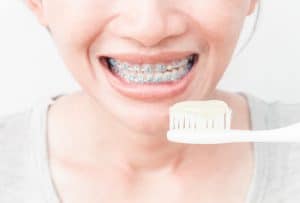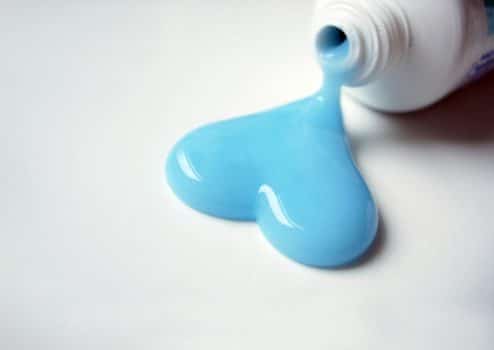During your time in braces, your and your orthodontist will give your teeth a lot more attention than they typically receive. This is because your regular adjustments are not the only critical part of your orthodontic care. How you clean and care for your teeth at home can play a big part in achieving the smile and bite that you want.
It’s possible that in the past you’ve used whatever toothpaste was on sale or what mom stocked in the medicine cabinet. But now that you are in braces your toothpaste needs might change. Depending on your treatment needs, your orthodontist might recommend a certain type of toothpaste for you—or even write a prescription for one.
In general, most kinds of toothpaste consist of:
- Mild abrasives that remove stains and debris from the teeth
- Flavors to add taste, which come from sugar-free sweetening agents that will not harm the teeth
- Humectant, which traps water in the toothpaste and allows it to maintain a gellish texture
- Detergents that cause the foaming action during brushing
Here is a quick guide to help you understand the basics of toothpaste categories. Keep in mind that these categories are not mutually exclusive. You may use a brand of toothpaste that contains fluoride and desensitizing agents, for example.
Fluoride Toothpaste
 Fluoride toothpaste helps remove plaque, a thin film of bacteria that coats the teeth and gums. The addition of fluoride to a toothpaste helps it strengthen enamel, making the teeth and gums less susceptible to disease and decay. That’s why you’ll find fluoride in more than 95% of toothpaste on the market. There are even toothpastes with highly concentrated fluoride only available by prescription. Your dental professional may consider this option if your teeth are at an especially high risk of decay.
Fluoride toothpaste helps remove plaque, a thin film of bacteria that coats the teeth and gums. The addition of fluoride to a toothpaste helps it strengthen enamel, making the teeth and gums less susceptible to disease and decay. That’s why you’ll find fluoride in more than 95% of toothpaste on the market. There are even toothpastes with highly concentrated fluoride only available by prescription. Your dental professional may consider this option if your teeth are at an especially high risk of decay.
Many experts consider the addition of fluoride to toothpaste and drinking water to be one of the most important achievements of the 20th century. More recently, fluoride has come under suspicion of causing stomach pain and indigestion in certain individuals. If you have concerns about any of these effects, make sure you talk to your dentist or orthodontist before changing your toothpaste.
Desensitizing Toothpaste
Desensitizing toothpaste contains ingredients such as potassium nitrate, stannous fluoride or strontium chloride, which are numbing agents that block pain signals to your tooth’s nerves. Typically, teeth become sensitive after a layer of enamel has worn away, exposing them to the air—and anything you eat or drink.
Some brands of toothpaste advertise immediate results, but experts say that users typically need to brush consistently with the toothpaste for several weeks to notice results. For cases of severe sensitivity and pain, your dentist or orthodontist might need to write a prescription for a toothpaste with a higher concentration of desensitizing agents.
Anti-Calculus Toothpaste
No, your orthodontist is not trying to discourage you from completing your math homework. These toothpastes inhibit the demineralization of teeth due to plaque, as well as the formation of calculus, which is more commonly known as tartar.
Because tartar comes from bacterial plaque that has hardened, you can’t clean it off. This is what that scraping instrument your hygienist uses during your cleaning is for. If you seem to require a lot of tartar removal at each visit, your dentist might suggest this type of toothpaste. You can spot these toothpastes on your own by looking for pyrophosphate or zinc citrate in the ingredients.
Anti-Plaque Toothpaste
In addition to removing plaque, the active ingredients in these toothpastes reduce bacteria’s toxic effects on the teeth and surrounding tissues. An anti-plaque toothpaste is usually recommended to anyone with a risk of developing gum disease. Ingredients you might find in an anti-plaque formula include triclosan and zinc citrate.
Whitening Toothpaste
Whitening toothpaste can help brighten your teeth by lessening mild surface stains. The toothpaste often will include abrasive properties that polish the teeth and a bleaching agent.
Whitening toothpaste can produce results in about six weeks if used at least twice per day, but remember that it will not alter the natural color of your teeth or travel beyond the surface to remove deep stains.
At Orthodontic Associates, we care about the overall health of your teeth in addition to that perfect smile that we can help you to achieve. Contact one of our nine convenient locations around Baltimore to schedule a consultation. We look forward to making you smile.



